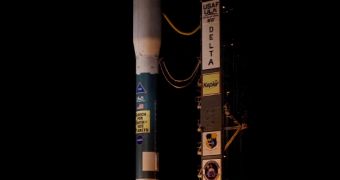Officials at NASA recently celebrated the 5th anniversary of their Kepler space telescope. This provided the perfect opportunity for investigators to again assess the contribution that this single, small observatory made to astronomy and to the field of planetary sciences in particular. Kepler is to thank for discovering more than half of all confirmed exoplanets in our galaxy.
Developed by Ball Aerospace and Technologies Corporation for NASA, the telescope was launched aboard a Delta II delivery system from SLC 17B at the Cape Canaveral Air Force Station, in Florida, on March 7, 2009. Its initial science mission is scheduled to last more than 7.5 years.
Since arriving in orbit and completing its testing and commissioning phases, the spacecraft has discovered in excess of 3,600 exoplanetary candidates in just a small portion of the Milky Way. The spacecraft's field of view includes just 150,000 stars, out of around 100 billion in our galaxy.
Of all detections, 961 candidates have already been confirmed by other ground-based telescopes. Kepler mission scientists say that the telescope's confirmation rate is expected to reach more than 80 percent by the end of the mission. If that holds true, then more than 2,880 exoplanets will have been found by this observatory alone.
Beyond its actual studies and statistical performances, what Kepler did was confirm to astronomers that our galaxy, and indeed all galaxies in the Universe, is actually teeming with planets. The mission established that the vast majority of stars have exoplanets in orbit, something that has been hypothesized in the past, but never observed directly.
“In five years, Kepler has revolutionized our view of our place in the Universe. Now we know Earth-sized planets are common across the galaxy,” says researcher James Fanson. The expert was the manager of the Kepler project during development and launch. Fanson is based at the NASA Jet Propulsion Laboratory (JPL) in Pasadena, California.
“Kepler really has reaped an amazing harvest of planets as well as other important and exciting results; much more than we had dared hope for. Kepler has demonstrated that essentially every star has planets. This is a philosophical game changer for thinking about humanity's place in the Universe,” adds Nick Gautier.
The expert, based at the JPL as well, is the deputy project scientist for Kepler. He adds that several newly-found worlds are very similar to Earth in terms of mass, density, and overall size. This is basically why the telescope was launched, to find Earth-analog exoplanets around nearby stars.
However, Kepler's main mission – as of yet unfulfilled – is to find an Earth twin, an exoplanet featuring physical and chemical traits extremely similar to those of our own planet. Such a world would make up the best target for any potential colonization mission to be conducted in the distant future.

 14 DAY TRIAL //
14 DAY TRIAL //